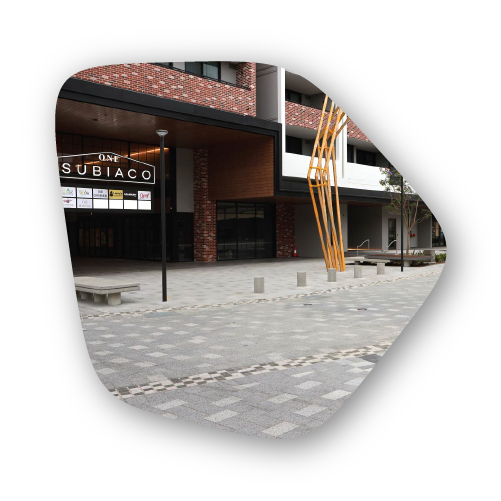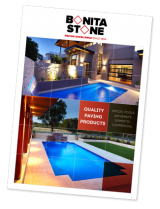
Why it is so important for your paver patio to have good drainage
A patio can provide the perfect place for relaxing, entertaining and can add value to your home. Pavers are a popular option due to their durability and affordability, but to ensure they stand the test of time, you will need to make sure your pavers have adequate drainage. Here’s why it’s so important and how you can prevent drainage issues with your paved patio.
Issued caused by poor drainage in your paver patio
There are several problems poor drainage can cause, here are just a few:
Sunken pavers
If your paver patio doesn’t have proper drainage, the underlying base becomes saturated and cannot drain away. Over time, the weight of the pavers can cause them to sink. Water can collect in the hollows and worsen the problem. Sunken pavers look unsightly, and they can be a trip hazard also, so as soon as you start to notice even the slightest unevenness, you should fix it as soon as you can before the problem worsens. It usually occurs because the pavers haven’t been laid correctly, the ground hasn’t been prepared properly before laying the pavers or drainage hasn’t been considered.
Organic growth
When pavers are exposed to excessive moisture, they will inevitably accumulate organic growth such as mould, mildew, and moss. This can make your pavers slippery to walk on, and it can be troublesome to remove if it is been left untreated for an extended period. If your pavers are constantly damp or wet, this can cause damage and shorten their lifespan significantly. It is not uncommon for pavers to crack when they are continuously exposed to such conditions.
Water getting into the home
If you have a paved area near an entry point of your house and drainage hasn’t been factored in, it’s a good chance that the overflow of water will end up inside when there’s a heavy downpour of rain. Paved areas with no drainage means the water has nowhere to go and often floods and overflows to everything around it.
Damage to surrounding landscaping
As mentioned, poor drainage leads to flooding and overflow to surrounding areas, and a lot of the time, people have landscaping or garden beds of some sort around their paver patio. A heavy influx of water spilling into these areas can see greenery get flattened and irreversibly damaged.
Water pooling around the foundation of your property
Water can pool around the foundation of your home when drainage is left uncorrected. Over time this can cause substantial damage to the structural integrity of your home, and this is the last thing you want. Structural damage is costly to repair, and it can make your home unsafe to live in.
How to ensure your paver patio has good drainage
Make sure the correct base materials are used
Your pavers must be laid on prepared ground to prevent water damage to your patio and your home. Before laying your sand, the ground needs to be flat and a layer of gravel needs to be laid, wet, and compacted. Once this is done, the sand can be laid and then pavers. When this is done properly, your pavers won’t move, and the water can drain away nicely.
Install the patio on a slope
Another way to ensure your patio has good drainage is by installing the pavers on a natural slope if your backyard has one. This will encourage excess rainwater to run away from the home.
Add geotextile or filter fabric
If your backyard doesn’t have a natural slope, you can install a filter fabric or geotextile as they are commonly called. They are made of a permeable material that prevents the subgrade from moving while allowing water to drain. By installing this underneath your pavers, you could extend the lifespan of your patio.
Install drains
A great way to assist good drainage of your paved patio is by installing drains. One way you can do this is by building it underneath your pavers using PVC pipes. You can either drill holes in the bottom of the pipes which will allow the water to drain out or you can have the water diverted to a different area, away from the home.
Why choose pavers for your patio?
Pavers are an affordable way to create a stunning feature at your home. There are endless material options, and they are simple and quick to install. Many choose pavers for their durability and are commonly laid as walkways, around swimming pools, driveways, and outdoor entertainment areas. When done well, they can add significant value to your home by adding to your curb appeal. Not only that, the more inviting your outdoor spaces, are the more inclined you’ll be to use them.
Ensuring your pavers are laid correctly and drainage is put in place from the get-go will protect your patio and home from damage, and they’ll maintain their beautiful appearance for decades to come. It is best to speak with your contractor about what drainage solutions they are going to implement when installing your patio to avoid headaches down the track. While we have mentioned a few throughout this article, there are many others to choose from. If you are looking for pavers for your home, check out our collection here at Bonita Stone, we have pavers for every setting, and they are made right here in Australia.






